MINDS, BETTER BUSINESS
Having a global top 250 university in the Bay Page 14 URBAN RENEWAL
Benefitting Tauranga’s central city Page12
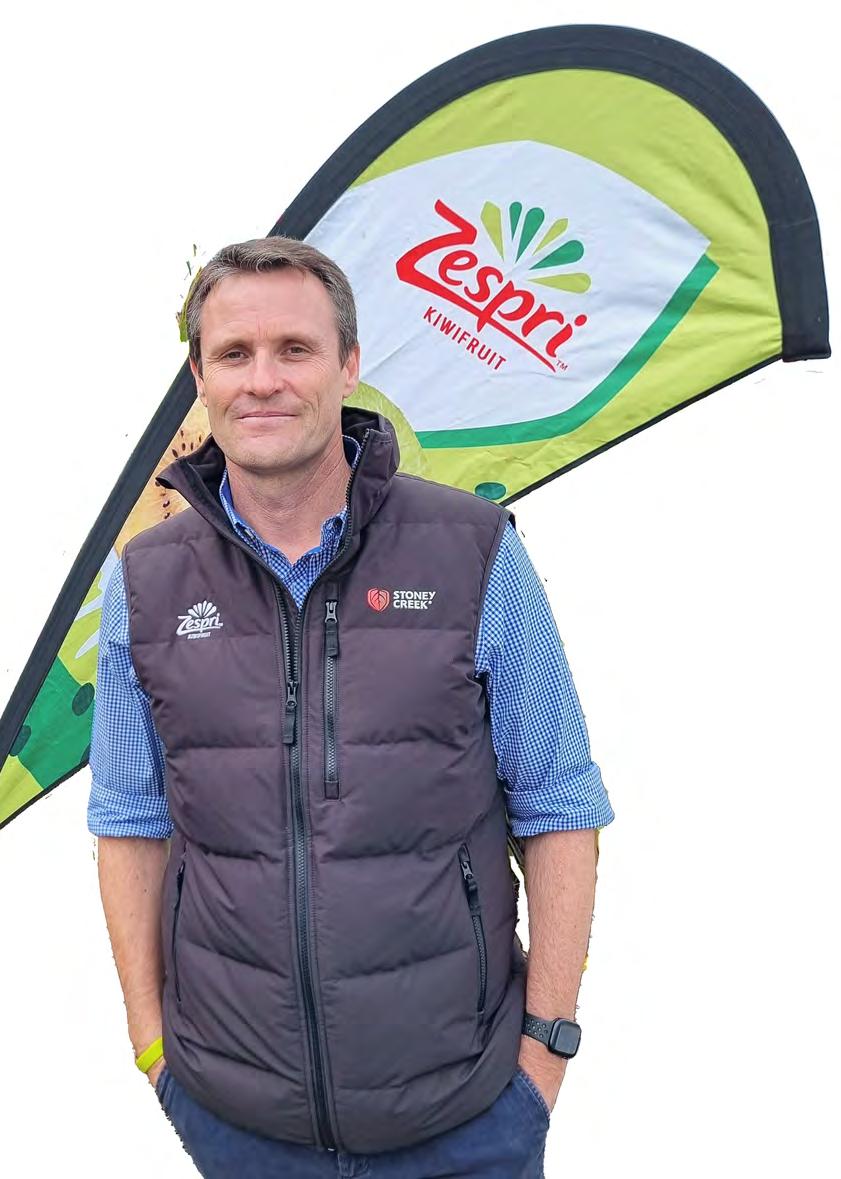
SPECIAL FOCUS
GDP REDEFINED
Why the time for accountability is now Page 13


MINDS, BETTER BUSINESS
Having a global top 250 university in the Bay Page 14 URBAN RENEWAL
Benefitting Tauranga’s central city Page12

GDP REDEFINED
Why the time for accountability is now Page 13

At a time when business news in New Zealand seems predominantly bleak, BOP Business News discovers there is a bright light on the economic horizon for the region.
s Dan Mathieson departs Zespri to head up the Americas division of giant berry company Driscoll’s he feels confident the industry is well placed to enjoy growing returns, while Zespri retains the sector’s claim for the highest
Speaking at Mystery Creek Fieldays, Mathieson acknowledged this was not the case little over a year ago
as the sector emerged from the challenges of Covid, tight labour supply and quality issues with the 2022 harvested crop.
With this year’s harvest wrapped up, it appears to have benefitted from the best of both quality and quantity, with 193 million trays harvested marking a new record against the previous one of 184 million in 2021.
“I think if I had tried to leave two years ago, I would have been tied > Continuedonpage5





JoiningCredit:Availablefrom6Mayto10August2024.New customersonlyona24-monthbusinessbroadbandSmart FibreofHyperfibreplan.Repayableifyouleaveearly.$13.04 excl.GSTmodemshipping,nonstandardinstallationandearly exitfeesapply.FreestaticIPAddressincluded.Broadband notavailableeverywhere.Excludesanyotherchangeswhere applicable.Non-transferableorexchangeableandnonredeemableforcash.T&Csapply.

> Continuedfrompage1
up and hauled back by growers demanding I put things right before I go,” admits Mathieson.
The 2022 harvest with its postCovid labour limitations meant fruit had been harvested to lower standards than usual, with damage often not becoming apparent until it was due for shipment.
In the worst case, almost an entire shipment of Green fruit had to be written off on arrival in Japan, having a material impact on growers’ already depressed per tray payment that year.
“What we learnt was that fruit can turn in quality very quickly and demanded more care from right across the supply chain,” says Mathieson.
A massive industry-wide effort, led by Mathieson who fronted a series of grower road shows to explain the issues, resulted in a major turnaround last year, aided in part by lower-than-expected volumes.
“We now have more good people in the right places to bolster quality checks, to see signs early and make course corrections as needed. We are also conducting many more audits through the process.”
He ruefully acknowledged a bill for $500 million in quality downgrades has the effect of focusing minds on solutions.
Strong markets, good fruit volumes, firm prices, and the ‘all-clear’ on a valuable crop treatment mean Bay of Plenty kiwifruit growers also have plenty to celebrate as they wind up the 2024 harvest.
NZ Kiwifruit Growers Incorporated CEO Colin Bond said good teamwork across the supply chain had ensured timely harvest and packing of fruit this season.
“I would like to thank the thousands of pickers and packers as well as the countless other
est kiwifruit growing region, the spray has become even more critical, but it did face the possibility of being banned by the Environmental Protection Authority (EPA).
However, after a review and committee hearing in late April the EPA allowed the spray to continue to be used, subject to some conditions. Had the product been banned, it was estimated 15% of orchards would have been unviable and a further 20% barely profitable.
> I would like to thank the thousands of pickers and packers as well as the countless other workers who have rolled up their sleeves over the last year and worked diligently to create a successful harvest for our industry.”
workers who have rolled up their sleeves over the last year and worked diligently to create a successful harvest for our industry,” he said.
More good news came in May for growers.
The season had also been overshadowed by the very real possibility growers would be banned from using Hi-Cane, the spray applied to enable even and well timed budding during springtime.
As average temperatures have risen in the industry’s larg-
Colin Bond said the lost income to NZ Inc. would have amounted to over $1.5 billion in export earnings over ten years, and that was conservative at best.
He said he had never had as many phone calls or emails from growers expressing a deep sense of relief about the decision.
“The uncertainty over Hi-Cane has been a major concern for investors and growers over the past two years and has created enough uncertainty to affect orchard prices to an extent,” he said.


Thisspecialisedmanufacturingbusinesshas becomeacommunityfixture,servicingand designingcustom-madesolutionsforclients acrossarangeofkeyindustries.Enquire now!
Therehasneverbeenabettertimetobecomeabusiness broker.Withmorebusinessownersretiring,increased levelsofimmigration,interestratesdecreasingand increasingbuyerdemand,therearemoreopportunities thaneverbeforetobrokersuccessfulbusinesssales transactions. Ifyouhaverunyourownbusinessorhaveasuccessful trackrecordofsalesinindustry,realestate,finance, bankingorotherbusinesstobusinessfields.We’dlike tohearfromyou.
Call 0800546528 foraconfidential,noobligationchat aboutyourfuturewithLINK.

Colliers’ kiwifruit orchard survey supports this with orchards in late 2022 and 2023 selling for significantly lower prices than their peak in autumn 2022. The volumes of orchard sales had also dropped significantly, to 25 last year compared to 70 in 2021.
However, the market now appears to be turning, with a return to more normal crop yields this season, stronger price signals, and continuing strong demand for SunGold kiwifruit.
Last season’s crop reported strong average per tray values after a slump in 2022 with Green returns up from $5.78 a tray for the 2022 harvest to $9.55 a tray for last year’s harvest.
It did however come on the back of last year’s exceptionally low harvest of 134 million trays,
which were impacted by severe weather events including frosts and floods.
Most growers were 20-30% down on their anticipated volumes, making this year’s harvest more of a “return to normal.”
Labour woes also appear to have lifted, thanks to more RSE workers and backpackers in New Zealand, and greater packhouse automation coming on stream.
Dan Mathieson said significant market opportunities exist in the United States and Vietnam.
To that end Zespri has expanded its Vietnam office across two cities in the developing nation and increased its US staff from five to 30.
From July Mathieson is being replaced by Zespri’s chief operating officer Jason Te Brake.

$147,000. Amplegrowthopportunities.







PUBLISHER
Alan Neben, Ph: 021 733 536
Email: alan@bopbusinessnews.co.nz
EDITORIAL
Alan Neben, Ph: 021 733 536
Email: editor@bopbusinessnews.co.nz
PRODUCTION – Copy/Proofs/Graphic Design
Times Media – Clare McGillivray
Email: clare@times.co.nz
ADVERTISING
Pete Wales, Mob: 022 495 9248
Email: pete@bopbusinessnews.co.nz
ELECTRONIC FORWARDING
EDITORIAL
News releases/Photos/Letters: editor@bopbusinessnews.co.nz
GENERAL ENQUIRIES
info@bopbusinessnews.co.nz
Bay of Plenty Business News has a circulation of 8000, distributed throughout Bay of Plenty between Waihi and Opotiki including Rotorua and Taupo, and to a subscription base.
Bay of Plenty Business Publications 309/424 Maunganui Rd, Mt Maunganui, 3116
Bay of Plenty Business Publications specialises in business publishing, advertising, design, print and electronic media services.
> By DAVID PORTER
Tauranga is currently absorbed in the run-up to its first local council elections in around four years. Next month’s issue of Bay of Plenty Business News will contain a full analysis of the results.
But at this point it is quite clear that the elections have attracted an abundance of
councillors and mayors, as well as new and relatively unknown contenders.
Clearly there is pent-up demand for a return to local democracy with all its flaws and strengths, following four years of the city being effectively administered by four commissioners.
This is not a reflection on the competence of the commissioners, but simply to say New Zealanders like to exercise their own judgement as to how they are governed.
unexpected decision to resign from the role of Labour leader ahead of the elections.
The public demanded change. And they have full access to democratic levers through which change can be effected. If the new coalition is seen as not succeeding in its aims by a majority of voters, they will in turn be voted out at the end of their term.
Essentially, an internal dispute between factional elites. This has triggered the largest humanitarian crisis in the region, according to a UNHCR report.
By the end of 2023, 6.1 million Sudanese were newly internally displaced, while over 1.5 million people had fled to the Central African Republic, Chad, Egypt, Eritrea, Ethiopia, Libya, Rwanda, South Sudan and Uganda.

In case you missed last month’s edition Scan to subscribe



It is worth observing that New Zealand is a very free country in almost all aspects, and especially in its elections and media coverage. Yes, post the most recent nationwide elections there has been the typical griping from some of
But the general consensus seems to be that Labour had a good run in office and was fairly beaten at the polls. That result was anticipated, in my view, by former prime minister Jacinda Ardern’s precipitate and
But if we look elsewhere in the world, we can see how very lucky New Zealand is to enjoy a free and fair election process compared to many other countries.
Consider, to take just one example, the appalling situation on the African continent, where Sudan is essentially disintegrating as a civil society and flooding its near neighbours with refugees.
According to news coverage, conflict erupted in the Sudan after fighting broke out in the capital Khartoum between the Sudanese Armed Forces and the Rapid Support Forces in April 2023.
And, according to the UNHCR, those leaving the country included refugees who had sought safety in the Sudan prior to the conflict.
I think it is safe to assume that enjoying safe access to election polls has fallen considerably below dire concerns about personal safety and the urgent need for food that are preoccupying these displaced people.
I can only urge Tauranga’s residents to access the copious information that is readily available about candidates, and make sure that you cast your vote in this council election.

Pioneering New Zealand companies AgriSea and Fertco have joined forces to launch SeaPhos – a farm fertiliser born from the ocean meeting innovation on the land.
Showcased at Fieldays Innovation 2024, the new product aims to disrupt the agricultural sector with a reduction in costs, rise in productivity, and enhancement of nutrient efficiency.
“SeaPhos has been a long time in the making, but we needed the right partners and team behind the innovation,” says Tane Bradley, Chief Innovations Officer at AgriSea.
“Our collaboration with Fertco has enabled us to create a product that truly bridges chemistry and biology.”
SeaPhos blends the rich nutrients found in AgriSea NZ Seaweed Biostimulants with essential phosphorus, sulphur, and calcium from Fertco. This environmentally friendly, granulated fertiliser supports both economic and environmental goals by optimising natural nutrient cycling within the soil and minimising the impact on waterways.
Clare Bradley, CEO of AgriSea, said the hybrid technology of SeaPhos offers sustained nutrient availability through a controlled release format.
This approach stimulates root growth and soil biology, enhancing nutrient uptake and soil function.
“This is about enhancing soil health and nutrient efficiency,” said Bradley. “It’s also about two companies with shared values, coming together in innovation.
“As we learn more about soil biology’s role in crop yields, we view SeaPhos as a crucial step towards helping farmers maximise productivity and profit-

ability while reducing nutrient runoff and greenhouse gas emissions.”
SeaPhos’s granular dicalcic phosphate provides controlled phosphate release, leading to higher nutrient efficiency and lower environmental losses.
Its neutral pH of 6.6 is beneficial for soil organisms and prevents seed germination injury. Additionally, the reduced dust fraction from the processing of the product makes it safer for pilots who apply the product.
The AgriSea Seaweed Biostimulant enhances nutrient cycling and soil health.
Both companies are founded in environmental goals, and while they are New Zealand owned and operated, they have a global perspective on Phosphorus efficiency.
A recent study published in Nature Food underscores the importance of efficient phosphorus use. The study suggests that more efficient phosphorus application could extend the life of limited fertiliser stocks
to over 500 years, significantly boosting global food production to feed an expected population of nearly 10 billion by 2050.
Scientists from Lancaster University in the UK, along with AgResearch, and Lincoln University in New Zealand found that 30-40 percent of farm soils currently receive excessive phosphorus, with the most wasteful applications occurring in Europe and North America.
“Phosphorus is listed as a critical raw material by the European Union and is essential for optimal crop yields,” said Professor Phil Haygarth of Lancaster University, a co-author of the study. “We are unlikely to run out of phosphorus in the next 500 years, but only if we apply it as needed to produce optimal crop yields and stop wasteful over-applications.”
An Our Land and Water article recently shared how phosphorous is listed as a critical raw material by the European Union, and recently a topic of discussion by the United
Nations Environment Assembly. Globally 20,500 kilotons of phosphorus are applied to agricultural soils each year as fertiliser.
Concerns have been raised about its limited supply and loss to freshwater where it can degrade water quality. Phosphorus predominantly comes from mining phosphate rock sources, of which there are only a relatively small number of sources located in countries like Morocco and Russia.
Driving innovation through collaboration was the goal for Fertco and AgriSea, in their quest to help address some of these challenges.
“For AgriSea, collaboration is key to fast-tracking innovation and reducing on-farm costs,” says Tane Bradley. “Sharing knowledge and skills has been instrumental in developing SeaPhos. Collaboration drives innovation and progress.”
Warwick Voyce, CEO of Fertco, added: “For 25 years, Fertco has focused on improving nutrient efficiency to minimise environmental impact. Our investment in granulation technology for dicalcic phosphate fertilisers allowed us to innovate further with AgriSea.
“Our shared vision is to help farmers grow more while using less.”
The companies are looking ahead to sustainable agriculture through SeaPhos’ benefits, including improved soil health, enhanced nutrient efficiency and reduced environmental impact.
“We believe its versatility makes it a valuable asset across various agricultural sectors, supporting sustainable practices and contributing to the industry’s long-term viability,” says Voyce.

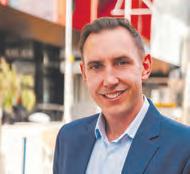
Urban Task Force for Tauranga (UTF) recently launched the “Love Tauranga” campaign to focus the public debate and mood towards electing a constructive and future orientated Tauranga City Council.
“‘Love Tauranga’ is all about what’s great about our city and the exciting future it has’” commented UTFs Vicky Williamson.
“We want people to be proud of our city and move on from the negativity.”
The campaign targets multiple social media platforms to allow the public to share their stories about the city.
“UTF are big believers in our city and its future. This is our contribution to selling the story of our city to the world. We want everyone who lives here to embrace the job of promoting our city.
“‘Love Tauranga’ is also a way of encouraging positive and constructive leadership from all civic and business leaders. We need to take pride in our city and that includes participating in our coming local Council election.
“When we last elected a Council in 2019, less than 50% of us voted, which meant a minority deciding who took office. We want our new council to have a strong and positive mandate, backing constructive leadership for our city.”
The UTF campaign was timed to focus attention positively at the time of the recent local body elections.
“We encourage all candidates to make their pitch in a positive manner and the voters can make their choice! We also urge all local residents to exercise their democratic rights and make their opinion heard by voting,” said Williamson.

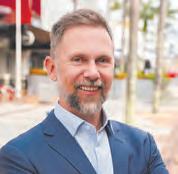


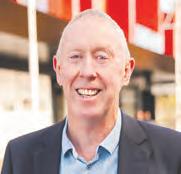




2degrees’ Shaping Business Study reveals increased optimism and investment in innovation and digital skills.
New Zealand’s business sector appears to be turning away from survival mode and towards growth, according to 2degrees’ latest Shaping Business Study.
Commissioned by 2degrees and conducted by research company Perceptive, the survey spoke to more than 700 employing business decision-makers around Aotearoa.
Andrew Fairgray, Chief Business Officer of 2degrees, says the report shows the importance for businesses to adapt in an inflationary, digital-first environment.
“As we review the fifth year of Shaping Business, it is encouraging to see a growing number of businesses not just surviving but beginning to thrive.
“We are seeing that businesses are feeling the rise of operational costs, but instead of sitting still, they are looking to
move forward. The businesses managing to thrive are those that are finding innovative ways to increase productivity, rethinking cost savings and investing in digital skills.”
After years of disruption and economic challenges, the percentage of business leaders identifying their businesses as thriving has slightly increased to 18 per cent, up from 17 per cent in 2023.
Business leaders are also feeling increasingly positive about the future, with 34 per cent saying they feel more optimistic than this time last year, up from 32 per cent, and 53 per cent anticipating revenue growth in the next year which

AndrewFairgray,ChiefBusiness Officer,2degrees
is up from 50 per cent in 2023. Continuing a longstanding trend in the study, larger businesses and newer businesses are leading the charge in this positive outlook.
While inflationary pressures are easing, the vast majority of businesses continue to see operating costs increase and are looking to find savings in creative ways. 80 per cent of business decision makers say their running costs have increased in the past 12
Whenyouneedexpertandpracticalsolutionsforyouoryourbusiness, talkwiththeleadinglegalteamintheBayofPlenty.Wetakeaunique partnershipapproach,workingalongsideyoutounderstandyourneeds anddeliverbetteroutcomes.
months, below last year’s figure (87%) but still well above the 53 per cent who said so back in 2021.
As costs continue to increase, businesses are seeing their margins squeezed, and less than half (48%) of business decision-makers are planning to increase their prices in the next year.
As a result, 72 per cent are looking for ways to reduce costs in the coming year, and not just by reducing headcount. While some are looking to reduce the size of their staff, the report shows that the biggest way decision makers are looking to reduce costs is through moving to new suppliers (38%).
Businesses making the best use of technology continue to thrive. Those that aren’t are being left behind, with 23 per cent of business leaders saying they lack the digital skills that need to get ahead, up from 19 per cent last year. The key barriers to acquiring these skills include a lack of
time (34%), and difficulties in finding skilled technology help, which has seen a 10 per cent increase from 2023.
The report also shows that effective use of technology continues to correlate to overall business performance, with 68 per cent of “thriving” businesses reporting that digital technology improves their productivity, compared to only 50 per cent of “surviving” businesses.
“Technology should boost what your business is already doing, and improve the results it gets,” says Fairgray. “It’s very easy to pile up lots of shiny tools, but in this environment, it’s never been more important to take a step back and make sure that they are delivering.”
For more information on the Shaping Business Study, and to register to get the full report, visit the 2degrees website https:// www.2degrees.nz/business/ shaping-business-study
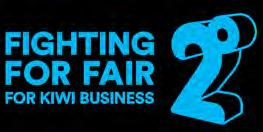






Apple has made a notable advancement in artificial intelligence with the unveiling of Apple Intelligence, a generative personal AI, at their annual World Wide Developers Conference (WWDC). This new technology, developed in collaboration with OpenAI and leveraging the capabilities of ChatGPT, is set to be integrated across iPhone, iPad, and Mac. It promises to revolutionise the way users interact with their devices by offering a highly personalised and context-aware experience.
Apple Intelligence differentiates itself by tailoring interactions to individual user preferences and behaviours. This is achieved through on-device processing, ensuring that personal data remains secure while the AI adapts to each user’s unique needs. Unlike traditional AI systems that provide generalised responses, Apple Intelligence offers bespoke interactions that enhance usability and user satisfaction.
One of the standout features of Apple Intelligence is its seamless integration across Apple’s device ecosystem, ensuring a

BY TYLER MELVILLE
consistent experience whether on an iPhone, iPad, or Mac. The AI is capable of performing a wide array of tasks, such as drafting emails, managing schedules, providing real-time language translation, and offering context-specific recommendations.
For example, it can predict and suggest responses in messaging apps, organise photos intelligently, and generate custom workout plans based on user data. Additionally, its integration with third-party apps broadens its utility, making it an invaluable tool for both personal and professional applications.
Privacy and security are at the
core of Apple Intelligence. In an era where data privacy is increasingly critical, Apple has designed this AI to process data locally on the device, minimising the risk of data breaches and unauthorised access. This approach aligns with Apple’s long-standing commitment to safeguarding user privacy, thereby enhancing user trust in its products.
The introduction of Apple Intelligence positions Apple strategically against other tech giants like Google and Microsoft, who are also heavily investing in AI technologies.
Apple’s integration of this AI within its ecosystem provides a competitive edge by leveraging the seamless interoperability of its hardware and software. Furthermore, Apple’s emphasis on privacy is likely to attract a broad user base concerned about data security. By processing information locally, Apple Intelligence not only bolsters user trust but also improves the efficiency and speed of its AI responses.
The launch of Apple Intelligence also presents significant opportunities for developers. Apple has equipped developers

Ifyou’recontemplatingachangeofcareer,whynot considerowningyourownfranchisebusiness?
Withdirectaccesstoover30well-knownfranchisebrandsin locationsallaroundthecountry,it’squitelikelywehavethe businessopportunitythatperfectlyfitsyourlifestyle.
IridiumPartnershelppotentialfranchiseesresearch,evaluateand navigatethefranchiseindustrytofindtheperfectopportunityforyou.
Contactustodayandgetsomebalancebackinyourlife.
CallMeredithon+64212099496 info@iridium.net.nzwww.iridium.net.nz

iOS18PreviewfromAppleWebsiteseeniniPhone.AppleIntelligence, theabilitytocustomisethehomescreen,andotherfeatureshavebeen announcedaskeyfeatures.
with tools to integrate and expand the capabilities of Apple Intelligence within their own applications, fostering an environment ripe for innovation. This could lead to a surge of new AI-driven applications and services, enriching the Apple ecosystem further.
Developers are encouraged to explore how this AI, built on the robust foundation of OpenAI’s ChatGPT, can enhance app functionality, create more engaging user experiences, and streamline operations. The potential for industry-specific applications, from healthcare to finance, is substantial, promising significant growth opportunities for those who leverage this new technology.
In conclusion, Apple Intelligence, developed with the expertise of OpenAI, represents a significant leap forward in personal AI technology, offering users a
sophisticated and highly personalised tool that enhances their interaction with Apple devices. By prioritising privacy and integrating seamlessly across its product lineup, Apple is set to redefine user expectations and maintain its competitive edge in the tech industry. As developers begin to harness the capabilities of this new AI, the potential for innovation is immense, heralding a new era of intelligent, user-centric technology.
Apple Intelligence will ship for free as part of iOS 18, iPad OS 18, and macOS Sequoia on all compatible devices later this year, with more features to be added over the coming year after launch.
Tyler Melville is an technical engineer at Stratus Blue. He can be contacted at support@stratusblue.co.nz
July 2024 marks a turning point for Tauranga, in the form of our first Council election since 2019.
> By BILL WASLEY, COMMISSIONER
(until 23 July 2024)
The Commission appointed in 2021, and reappointed for a further twoyear term in 2022, was charged with restoring trust and confidence in the Council as an organisation, making good decisions on behalf of the community, and putting in place long-term plans that will address decades of underinvestment in the infrastructure and community facilities our fast-growing city needs and deserves.
We think we’ve had a fair measure of success on all of those fronts and the recently-adopted 2024-34 Long-term Plan provides a realistic roadmap for the investments needed to maintain our essential services; address the city’s chronic housing shortage, unaffordable property prices and congested roading network; and provide the facilities a city of our size and importance should have.
We’ve done our bit and now it’s time for the people of Tauranga to do theirs. Local government voting rates around New Zealand are dismal, with most councils struggling to get more than 40% of registered voters to participate. For what could well be the most important election in our city’s history, that sort of participation rate simply won’t cut it.
Your new Council will need to have a substantial community mandate, because it has some important decisions ahead of it. That’s why it’s crucial that all electors weigh-up what they want for their city, identify the mayoral and ward candidates they think will best deliver on their wishes, and then vote for them.
By the time you read this column, you should have received your voting papers in the mail. If so, please take action by posting your votes back by Wednesday, 17 July, or drop them into an orange voting box at your local supermarket, library, or any council office by midday Saturday, 20 July – check the council website for details. Your decisions will determine the make-up of Tauranga City Council’s governance team for the next four-and-a bit years (the next council election in Tauranga will be in October 2028) and that gover nance team will determine the city’s future. So yes, your votes are important and immensely relevant, because they will tell your next community leaders what sort of city you want for yourselves, and for future generations of resi dents to live in.
Your city, your future lifestyle, your choice….

National’s tax threshold changes were confirmed as part of the Budget 2024, albeit with a delay in the effective date to 31 July to allow software providers time to update their systems.
The tax rates themselves remain the same, but the income thresholds for all but the top bracket have been increased. This means the effective tax rate for all earners will decrease, i.e. the same amount of income will be taxed at a lower rate. See chart.
For pay days on or after 31 July 2024, less PAYE will be deducted from an employee’s pay, meaning more cash in hand. Exactly how much more cash in hand someone will get will depend on how much they earn in the pay period and whether they qualify for other financial support measures.
Because we have two sets of thresholds applying for part of the year each, there needs to be a set of what is called “composite” rates that apply when 2025 year tax returns are filed. These composite rates effectively average the tax reduction across the whole year when working tax on annual income. If someone earned proportionately more income in the period after 31 July 2024, they
$70,001-$180,000
$180,0001+ 39%
may have been undertaxed via PAYE deductions and have a tax liability when their return is completed, and vice versa. This could affect individuals who are entering or leaving the workforce during the year, or others who work on a casual basis for periods of the year only.
Tax threshold changes don’t impact only on payroll, tax code selection, and personal tax calculations, they also have flow-on
$78,101-$180,000
$180,001+
implications for other tax types. Given the short lead time, the Government has taken a variety of approaches to when these different taxes will change:
• Thresholds used for extra pays, ESCT, RSCT, PIR rates –Only change from 1 April 2025
• Thresholds for FBT – Only change from 1 April 2025, but a new formula for calculating the alternate rate liability applies for the 2025 year. If excel spreadsheets are used to calculate FBT in the March quarter, changes will be

required for 2025 and 2026 years
• RWT rates – If an individual has moved down a tax threshold as a result of the band changes they can elect a lower RWT rate by notifying your interest payer.
Independent earner tax credit (IETC) – the upper threshold for eligibility for the IETC has been extended to $70,000 meaning an anticipated extra 420,000 taxpayers will be eligible. These changes should be built into the new PAYE table calculations and therefore shouldn’t require further work from employers.
FamilyBoost – Not technically a tax change, but administered by Inland Revenue, is “FamilyBoost” which provides a credit for a portion of childcare costs for eligible families. FamilyBoost will be available from 1 July 2024, with parents required to upload invoices to Inland Revenue on a quarterly basis for payment of the credit. Employers are not responsible for FamilyBoost, but

BY ANDREA SCATCHARD
may field questions if employees don’t understand how this “tax relief” will be delivered.
We understand that payroll providers were made aware of the impending changes ahead of the Budget, and as such have had a head start to get software updated. We recommend that employers touch base with their payroll provider (if this is outsourced) to find out the timelines for software updates and testing. Employers who prepare their own payroll may wish to consider whether now is a good time to move to an outsource model, or otherwise should keep an eye on the Inland Revenue website for key updates to PAYE deduction tables.
Andrea Scatchard is a Tax Partner at Deloitte, based in the Bay of Plenty. She can be contacted on ascatchard@deloitte.co.nz










As we navigate uncertain economic times, we are seeing a trend of clients’ use of temporary staff as a key workforce strategy.
Temporary staff work on a flexible, temporary basis and have no guarantee of length of employment.
Whether you are unsure of how long you need an extra hand for, or you need someone readily available, a temporary employee is a great option to consider during periods of uncertainty, mitigating the potential risk of signing on a new permanent staff member.
In the current employment market, there is a lot of quality talent out there ready to work and keen to show their worth and add value.
If you’re considering hiring a temp, here are some ways they can give your business a boost:
• Affordability – A temp workforce allows you to add staff without increasing your permanent headcount. You can hire multiple temps to cover spikes in demand, with no
long-term commitment when your workload decreases. This can provide a relatively cheap and low-risk solution to help you through the tough times.
• Flexibility – Employing temps encourages flexibility and suits the needs of workload fluctuations. They come with the flexibility to work around your individual workload requirements and can be on-call on an ‘as and when’ basis. You only pay for the hours that they work, so if you need someone to cover a sudden absence, or to fill in while another employee undergoes training/ development or supports a project for instance, a temp can be a great fill-in solution.
• Top talent – There are plenty of very well qualified professionals ready to go. These candidates have often worked for different companies throughout their careers and can bring a wealth of fresh skills, new perspectives and great ideas.
• Efficiency – Hiring temps provides a quicker way to recruit. They are often read-
ily available which limits long notice periods, downtime and fast-tracks their training and induction. Talent ID Recruitment will coordinate all of the checks, conduct the initial interview process and manage their payroll.
• Team fit – Incorporating temps into your employment strategy can be a great way to discover a new permanent employee, providing an opportunity for you to learn more about their skills and ensure they are a good fit for your team.
• Recruitment bac-fill – Hiring a temp while recruiting for a vacant position can reduce the pressure to hire quickly and risk selecting the wrong candidate by rushing the process. This back-fill option also minimises the strain on the rest of the team.
There is this misconception that temp employees tend to be a stereotypical receptionist or administrator. However, a temp can be as qualified and skilled as you require; They come from every industry and profession

BY KELLIE HAMLETT
– skilled, degree qualified, registered. Many are highly qualified and skilled, adding value through their ability to slip into a new environment, team and culture with ease.
Candidates choose to engage in temp work for all kinds of reasons. It may be because they have just moved to the region, or because they enjoy the freedom of knowing they are not tied down to a permanent role; They may enjoy the variety and flexibility, or their choice may be for pure lifestyle reasons.
Temporary workers can often
be the best employees because they have exposure to many different industries and workplaces, systems, and processes.
Having a temporary workforce can be hugely beneficial in terms of keeping on top of market fluctuations for a business.
Contingent workers, in a sense, are ‘on-demand’ talent. To label them mere temps, however, discounts the full scope, hightech nature and complexity of today’s contingent or ‘on-demand’ workforce.
Utilising a contingent workforce within today’s relatively unsettled business environment is a smart, lean way to run your business, whilst ensuring that the needs of your customers are met, a business-as-usual approach is the focus, and employment overheads are reduced.
Talent ID are Recruitment Specialists and can support you through your recruitment process. Please feel free to talk to us about this by calling 07 349 1081 or emailing kellie@talentid.co.nz
> By DAVID PORTER
Tauranga lawyer and philanthropist Bill Holland was awarded the Companion of the New Zealand Order of Merit (CNZM) in the King’s Birthday Honours List.
The citation highlighted his involvement in the governance of a range of community trusts and organisations over more than two decades. He was already a Member of the New Zealand Order of Merit (MNZM).
Holland told Bay of Plenty Business News that the recent award had come as a surprise and that he only heard about it on a confidential basis about a month before it was announced.
“It’s not something I ever sought,” he said. “I’ve been happy with my life. But I appreciated getting the award.”
Holland was for many years senior partner of Holland Beckett, a firm founded by his late father, and now acts as a consultant law-
yer to the firm. The firm is currently headquartered in upper Cameron Road, but is planning to relocate to central when a new building is completed there.
“I’ve been involved in so many different things,” he said. “I don’t love going to meetings. But you have that responsibility if you’ve got something out of something, then you have to give something back.”
Holland helped found the Acorn Foundation in 2003, chaired it until 2011 and remains
> Bill Holland, CNZM
an ambassador for the organisation, which has gifted more than $16.5 million to the community.
He became a trustee of the Tauranga Energy Community Trust in 2012 and has been chairperson since 2014, leading its transformational change from a consumer trust into a community trust.
Holland said he did not intend to ever go back to working full time and that he was always planning to slow down.
He noted that he had always




Regardless of how prepared and willing you may be, selling your business can be an emotional process. When you’ve spent many years of your life building your business, it’s natural to feel a sense of attachment to it. Although emotions are a normal response to change, it’s essential to separate them from the sale of your business to get the best deal possible.
Here are some useful tips to help you deal with emotions when selling your business:
• Use a business broker – Even for some high-value businesses, selling a business may be a ‘once in a lifetime’ situation.
Business brokers are experts in the complexities of selling a business and are committed to
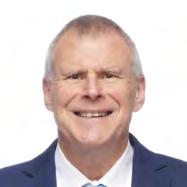
BY STEVE CATLEY
seamlessly guiding you through the entire process while keeping your best interests in mind and being empathetic. Many business brokers have also owned and sold businesses themselves, meaning they can
combine their first-hand experience with their professional knowledge, providing you with both an informed and relatable perspective.
• Stay focused on the sale – It’s easy to get distracted and overwhelmed by all the emotions that may come up when selling your business. However, it’s crucial to stay focused on ‘the big picture’ and end goal to successfully sell your business to the right buyer. You need to develop a plan of action to ensure you remain on track, such as getting your business ready for sale to meet the timeline you have agreed on.
• Manage expectations – When selling your business, it’s essential to establish realistic expec-
tations. You may have a set figure in mind for the sale of your business, so it’s important to communicate this to your business broker early on to get their expert opinion. Your business broker will conduct a value appraisal based on fair market rates, helping you manage your expectations accordingly from the outset.
• Stay positive – Although it’s sometimes easier said than done, it’s important to remain positive throughout the duration of the process. One way of achieving this is by celebrating the small wins along the way. This will help you to remain motivated as you grow closer to the actual sale of your business. Remaining realistically optimis-
“The ancient Chinese torture tactic known as lingchi — which translates loosely to “slow slicing,” “lingering death,” or “death by a thousand cuts” — was a method of execution from the seventh century up until 1905, when it was officially outlawed. As the name implies, lingchi was a drawn-out and brutal process, wherein an executioner would deliver justice to various lawbreakers by administering a series of cuts to the skin. Unlike most execution styles, which aim to kill sooner rather than later, the aim of lingchi was a long, slow punishment, intended to see how many cuts a person could withstand before dying.”1
Some might argue that the use of imagery generated by AI platforms such as Midjourney, Adobe Firefly, Generative AI by Getty, Microsoft Designer’s Image Creator, Dall-e 3 by Open AI and DreamStudio by Stability AI, to name just a few, amounts to lingchi. After all, the images generated by these platforms may well be the result of a thousand cuts of (or off) other images.
But what would the use of AI generated images arguably be leading to the ‘death’ of?
The answer to this rhetorical question is, in my view, as follows.
AI generated imagery is metaphorically killing the need for photographers and their expertise. Creative agencies, inhouse designers, marketers and businesses
using AI generated imagery are doing so instead of using either licensed or original images taken by real, flesh n’ bone photographers. Some AI images, I will honestly admit, are truly incredible – especially if the AI images have been modified by skilled designers – but the inescapable truth is the use of AI imagery is doing photographers out of a job.
AI generated imagery is also metaphorically killing the art of photography because commercial photographers, at least, are no longer being incentivised to create new images. As a result, AI generated imagery is also metaphorically killing the expansion of the ‘bank’ of images from which AI generated images are drawn (legally or otherwise) – if not
completely, then not fast enough to sustain a healthy AI imagery eco-system.
There is no doubt that AI platforms such as Midjourney, Adobe Firefly, etc are amazing tools for creative agencies and brands. They come at a cost, though, to photographers who have spent years if not decades on developing their craft. They also come at a cost to brands because, at present at least, brands cannot own copyright in AI generated images per se – consequently, they cannot, under copyright law at least, stop a competitor from using the same or very similar AI generated images.
I believe brands and businesses in general need photographers. Yes, need. Sure, AI generated imagery may be cheaper and more
‘convenient’ to ‘create’ (especially for those outdoor scenic shots up a mountainside on a stormy night), but without a constantly updating bank of images to draw from, the composition of images generated by AI will become homogenous. Add to that the risk that, on finding out images used by a brand are AI generated, consumers may feel misled or ‘cheated’ – especially in the realm of social media and influencers. Brands and businesses need to be able to differentiate their goods and services in the market and original, photographer-taken images – in which exclusive ownership of copyright can be claimed – is a proven way to achieve this.
AI generated imagery is undoubtedly here to stay. There
tic is key to a positive outcome.
• Seek support – Selling your business may feel like an isolating process, so it’s important to seek support from trusted friends, family and colleagues who can provide you with some necessary time-out from the major task of selling your business.
And most importantly engage the professional services and support of an experienced business broker who will ensure you are fully supported while concluding a successful sale.
Contact Steve Catley at steve.catley@ linkbusiness.co.nz or +64 21 341 117 for further information on the process of selling your business.

BY BEN CAIN

must be a balance, however, between the cost and convenience of AI generated imagery and the need for creativity and commercial differentiation. That said, with the constant need for new ‘flesh’ to feed the AI imagery beast, photographers might actually end up being in more demand than ever before…
Ben Cain is a Partner at James & Wells. He can be contacted at 07 928 4470 (Tauranga), 07 957 5660 (Hamilton), and ben.cain@jamesandwells.com
1. Howard, Krissy. “Lingchi May Be The Most Terrifying Punishment In History.” AllThatsInteresting.com, May 2, 2017, https://allthatsinteresting.com/lingchi. Accessed June 24, 2024.
For business owners, it feels like problems lie around every corner. Days are spent fighting fires and managing difficult situations. It would be natural to wish for a problem-free existence, but in fact the opposite is true: too many problems on your plate could be an indicator that a business breakthrough is about to happen.
“Iwish my life could be like a fairy tale, where all my problems disappear with the wave of a wand”, said the Lion in The Wizard of Oz
> THE PROFITABLE PROBLEM: WE CAN’T JUST WAVE A MAGIC WAND AND HOPE OUR ROBLEMS DISAPPEAR
Fortunately for the Lion, he only had the Yellow Brick Road to deal with. If he’d merrily been following State Highway 2 on a Monday morning, he might not have had such a rose-tinted view of his problems.
Here in the real world, we can’t just wave a magic wand and hope our problems disappear. In fact, many business owners would love to have the luxury of time and headspace to even begin tackling their problems, because right now, everything is focused on stopping the bleeding and surviving.
So why would anyone want yet more problems? It sounds like a self-sabotaging paradox, but if you embrace the concept, you will be able to reach higher levels of performance.
“We’re just going to keep our heads down, get through 2024 and then look at moving forward in 2025.”
Those were the inspirational words from a leader at one of Tauranga’s business networking groups. The message was simple: Leaders are struggling with too many issues right now.
Talent escaping; Time running out; Blockages in the supply chain; Economic Squeezing; Population expanding; Roads con-

gesting; Ships dumping; Climate changing.
It’s like playing a game of problematic whack-a-mole: You hammer away at one particular issue, and just when it disappears, another pops up to take its place. No wonder business owners are tempted to pull the handbrake on 2024 and hope for a clear path to growth in 2025.
But this would be a mistake. Playing it safe and avoiding problems is not the way to go, because seeking out and embracing problems is the only way to grow.
There is a myth that our problems will disappear when we find success. We tell ourselves that once we get the promotion, or open the second office, or a certain number appears in our bank account, then all our problems vanish quicker than a politician’s promise.
When this doesn’t happen, we
take one of two options:
We take a lesson from a 1980s leadership manual and tell ourselves to ‘outwork our problems’.
Or, we decide to hide from our problems, distracting ourselves with alcohol, Netflix, junk food and … work.
Either way, this isn’t the path paved with gold that you want to follow. It only leads to exhaustion and overwhelming stress.
Instead, we have an opportunity to reframe our problems.
What if your problems were not a sign that you were failing, but an indicator that you were succeeding?
Peak performance psychology describes four levels of performance: incompetence, competence, excellence and genius.
Usually, we try to avoid the things we’re incompetent at, struggle through the tasks we’re competent at, and aim to hang around in the ‘excellence’ zone of performance as much as possible.
For example, I am incompetent at payroll and taxes, so I get someone to do these tasks for me. Running workshops is in my zone of excellence, so I try to do as much of this as possible.
But we all have a zone of genius, and this is where things get interesting. Because when we move into the upper limits of our performance – shifting from a zone of excellence to a zone of genius – we encounter ‘Upper



ULPs are the resistance we face when trying to do something we haven’t done before.
ULPs include procrastination, perfectionism, poor attention to detail, lethargy and impulsive behaviours.
Ever thought you just couldn’t be bothered to send off a contract for a massive deal? ULP.
Ever sat down to create a really important proposal and then said, “I’ll just have a quick coffee / snack / cigarette, and then I’ll get started”? ULP.
Ever got promoted and then made a really basic screw-up that ‘you’ wouldn’t make? ULP.
And this is the powerful paradox of problems: as you grow in your business and career, the problems aren’t showing up to hold you back, they are appearing as a signpost to push you forward.
You have a choice: you can hide from your problems and hope and pray that someone will click their heels and give you some courage.
Or you can take action and embrace problems as they arise.
Problems force you to be better. They push you to innovate. They compel you to tap into creativity. They hold up the mirror to remind you that – like the Lion in Oz – you had the courage you were seeking all along.
A business problem should be considered the same as a six-figure tax bill: Yes, it’s not exactly a pleasant experience, but the fact it has appeared means you’re doing something right. Stop hiding and hoping. Maybe things will get better in 2025, but why wait? There’s no point living in scarcity, after all, it’s called the Bay of Plenty, not the Bay of Problems.
Time to embrace the problems that are thrown at you and use them as an opportunity to prove what you’re capable of. After all, if you want to fix the world’s problems, first you must fix your own.
Freddie Bennett is a Guinness World Record holder, bestselling author and leads New Zealand’s leading mastermind group for professionals: Professional Superheroes. He gets businesses unstuck, unshackled and unleashed. Freddie can be contacted at hello@freddiembennett.com

A distinguished heritage building at the core of Tauranga’s Central Business District is positioned to benefit from the city’s revitalisation program, which continues to transform the urban skyline of New Zealand’s fastest-growing region.
The tenanted commercial premises on 395 sq m (more or less) at 57 Spring Street is in a prime location adjacent to Te Manawataki O Te Papa-Heartbeat of Te Papa, a new civic precinct that forecasters say could attract triple the number of visitors to the city centre by 2035.
Bayleys Tauranga salesperson Rory Brown says the subject property is a local landmark, offering investors and occupiers an opportunity to secure a prominent foothold on the northern side of busy Spring Street.
“Downtown Tauranga is experiencing significant growth reflective of cohesive private and public sector investment. Opera-
tors are taking notice, and we are seeing once vacant or underutilised spaces in the city centre attractively repurposed to promote new commercial, retail, and visitor activity.
“Businesses already committed to the city centre are enthusiastic about ongoing development works, which include a swathe of upscale office suites, including Craigs Investment Partners new seven-storey ‘world office’ at 2 Devonport Road, and a vibrant mix of office, commercial and hospitality space in the Northern Quarter buildings on the Strand.
“This transformation is set to catalyse local economic growth, which could deliver a steady

appreciation of property values in the area and a level of prestige for the subject property given its heritage architectural qualities.”
Brown is marketing the Spring Street property for sale by deadline, closing at 4:00 pm on Thursday, 11th July (unless sold prior) with Bayleys’ colleagues Christy Arundel and Lloyd Davidson.
The 598sq m (more or less) floorplate fully occupies the total site, except for a cobblestone patio in the northern corner and two small basement storage rooms.
Local law practice The Firm has a three-year lease to February 2025 plus renewal rights for the 297sq m (more or less) ground
floor, which comprises a modern mix of open-plan and partitioned workspaces, board/meeting rooms, and staff facilities.
Bayleys Tauranga salesperson Christy Arundel says the property returns a net annual rent of $171,900 plus GST from two leases, including the current owner’s negotiable occupation of the first floor.
“The well-appointed approximately 300sq m first floor is currently tenanted by the current building’s owner. However, there is flexibility here, providing an opportunity for an owner-occupier to secure the space for themselves or choose to keep the lease in place and enjoy the strong annual income.”
Both levels have been refurbished in recent years to a high quality, offering versatile commercial accommodation. This includes welcoming reception areas, excellent natural light, and air conditioning throughout.
Bayleys Tauranga salesperson Lloyd Davidson says the property is a cherished heritage-listed building, celebrated for its iconic front feature columns.
“This heritage status does not impede the building’s functionality, ensuring it remains a versatile and attractive investment option for a new owner,” he says.
https://bit.ly/3KVSkLY
























As the US presidential election date approaches the pundits are confused – polling shows Trump is scoring way ahead of Biden on the economy, despite the economic indicators out of the US being almost exclusively positive under Biden’s watch. Why is this so?
While every economist in the country can tell you you’re better off and the economy is scoring ‘A1 healthy’, how can you possibly believe them when your pay check doesn’t go anywhere near as far as it did five years ago and you’re no longer able to make ends meet?
As a voter when I am told that I am in good shape because GDP is at an all-time high, I contrast the Economist’s version of GDP (Gross Domestic Product) with my own measure of GDP (Grocery Day Pain).
At present in the US there seems to be a disconnect: traditional GDP is high – well, GDP of $28trillion certainly seems a lot to me anyway – yet Grocery Day Pain is by all accounts still crippling for the average American.
It is of little solace to us here in New Zealand where our interest rates remain stubbornly high and GDP growth is still well below target that we are not being told that the economy is looking healthy – we already know what our Gro-

BY ALAN NEBEN
cery Day Pain level has been telling us for some time now: it is still really hard for the average Kiwi to make ends meet.
At a time when we fear our mortgage repayments could sink us next month and we are assured interest rates will not come down anytime soon, at least we have a competitive banking structure that will ensure we are on an equal footing with our overseas trading partners … don’t we?
And at a time when the average Kiwi family no longer goes
out for dinner because food is so expensive that they can’t afford to, at least we have a competitive retail supermarket structure that ensures we get the best possible grocery prices … don’t we?
In a country the size of New Zealand, where we aspire to have a standard of living similar to that of other larger Western economies, limitations of scale can be challenging – all the more reason to ensure our economic regulatory infrastructure is highly tuned and well managed.
For those tens of thousands of Kiwis struggling to pay the mortgage and still afford their weekly grocery shop, the need for improved competitiveness in the banking and grocery markets is urgent and imperative.
There is a sense amongst mortgage-paying Kiwi grocery shoppers that politicians and regulatory authorities who are tasked with ensuring competitiveness in those areas need to be more decisive and changes need to come sooner … much sooner.
Although high levels of Gro-

cery Day Pain are a global phenomenon, here in 2024 New Zealand we need change soon. Repeated lengthy government enquiries, industry working parties, green papers and future plan position statements do little to give confidence to average Kiwis that they will be getting the best deals any day soon when it comes to housing finance affordability and food prices. There is a feeling amongst average Kiwis that when we’re doing it tough, we all need to pull together, but some sectors such as banking and grocery retail seem immune to this ethos.
> The need for improved competitiveness in the banking and grocery markets is urgent and imperative.
They may pay lip-service … “we’re here to help” … but rarely do we see their profit levels fall whilst those of their clients and suppliers are squeezed, sometimes terminally.
Maybe it’s time the ‘free market’ wasn’t license for a ‘free ride’. We certainly can’t rely on the health sector to ease our Grocery Day Pain.
Alan Neben is a Mount Maunganui local and experienced New Zealand publisher. His columns provide a light-hearted perspective on social changes effecting New Zealanders.

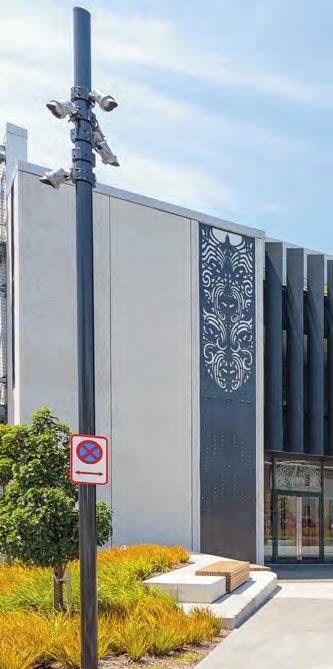
> THE PERKS OF
The University of Waikato has recently been celebrating the release of the 2025 QS World University Rankings. With an increased ranking of 235, we’ve maintained our place in the world’s top 250 universities and landed in the top three in New Zealand.
We have also held onto our position of number one in New Zealand in the QS research metric and were ranked in the top 100 globally for both research and sustainability.
Our success is something to be shared with the Bay of Plenty community. These rankings recognise that our academics are driving innovation and developing new ways of thinking about local and global challenges. It also reflects the strong partnerships we have with employers in the region.
We have been part of the Bay of Plenty for 30 years, and in the past five years have worked with partners to establish ourselves in Tauranga city’s Knowledge Precinct. Having a globally ranked University at the heart of our city directly
influences positive outcomes for the region. It brings in staff and students from around New Zealand and the world, boosting our economy. Rankings attract international businesses and tertiary providers who want to collaborate with our researchers.
The exposure of our researchers to international thinking allows them to develop global solutions and apply them locally.
> Having a globally ranked University at the heart of our city directly influences positive outcomes for the region.
We benefit by attracting both local and international students who are full of innovative ideas and energy to pursue new ways of thinking. International students enhance the cultural diversity of our city and boost our economy, while connecting us with cities across the world.
These students then either become graduates who are ready to make an impact in our workforce, or choose to pursue research careers where they can collaborate with international academics and businesses on the issues facing the world today.
Our students are already contributing directly to the future of Tauranga with our award-winning initiative, The Impact Lab, where they tackle sustainability issues in the community, such as working with Tauranga City Council on transport solutions.
We’re making an impact in the Bay of Plenty through our research in a broad range of disciplines, from marine science, law, education, high performance sport, and business – to name but a few.
At our Coastal Marine Field Station, researchers are exploring how seaweed can help our kiwifruit sector battle disease and climate change.
At our Adams Centre for High Performance, our team offer world-class training facilities and

EDUCATION WITH VICE-CHANCELLOR
PROFESSOR NEIL QUIGLEY
solutions which are being used by athletes preparing for the Paris Olympics. At the Waikato Management School, we’re supporting local AI and Fintech startups to connect with the New Zealand market through a short course for innovators to pitch their concepts and products to Bay of Plenty businesses.
This year, we are also celebrating our 60th anniversary. Being one of New Zealand’s youngest
and smallest universities makes this global recognition particularly impressive.
We are ambitious in our plans for this region and are committed to the Bay of Plenty for the next 100 years and beyond. With our student numbers growing and plans to enhance study offerings, accommodation, and research facilities, we are definitely on track.
Building on our strong connections with industry is vital for us to achieve our vision, so thank you for your contribution to our research, engagement, and involvement in the QS Employer Reputation survey as part of this process.
Our global rankings success is as much ours as it is yours. Let’s celebrate our top 250 global status together and the positive impact this has on our region now and into the future.
Professor Neil Quigley is the University of Waikato Vice-Chancellor www.waikato.ac.nz



Host: Talent ID Recruitment. Location: Terrace Kitchen, Rotorua. Date: Thursday 6 June 68 generous locals packed out Terrace Kitchen for Talent ID’s inaugural Cocktails For A Cause, a fundraiser for the Graeme Dingle Foundation. $3,010 was raised for the foundation’s work alongside youth.
Photographer credit: Katie Hoy Photographer www.instagram.com/katiehoy.photographer/
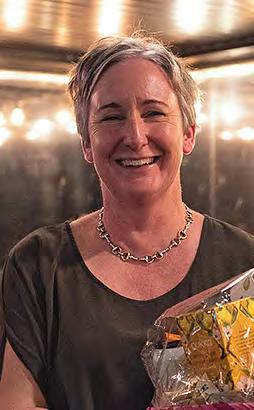





ONESallyCopeland(NZHLRotorua). TWOBexTemple,KellieHamlett,HollyOppers,SimoneDavey,AleeshaKemp(TalentIDRecruitment),LindaMacpherson(ShoutMarketing). THREE Pauline Warbrick,TrojanTeRehu-Tuki(GraemeDingleFoundation). FOURCindyWhittington,MichaelaRobson,TraceyLammas,MichelleWashington(TheAppearanceClinic). FIVEKristinLeaity(LakeCity HolidayHomes),KellieKing,TraceyMoore,AlexaWhitehead,AsmiAsmi. SIXLizzyGaston(GraemeDingleFoundation).
Experienced valuations specialist Anna Lomas has returned to Colliers as a Director of Valuation & Advisory Services and will be based in Tauranga.
Having first worked for Colliers in Wellington in 2006, Lomas has also enjoyed stints with the business in Vietnam and Sydney.
She spent the past nine years with insurance firm Aon, starting in Sydney before returning to the Bay of Plenty in 2017.
Lomas completed a Bachelor of Business Studies majoring in Valuation & Property Management and a Bachelor of Arts majoring in Business Psychology at Massey University before entering the workforce in 2004.
Lomas, who lives with her family in Papamoa, says she is thrilled to be back in familiar surroundings.
Leading intellectual property expert Ben Cain has been promoted to partner at James & Wells
Ben brings a rare combination of marketing and agency experience to his legal practice, having worked

in senior positions managing global brands previously.
Ben speaks the same language as business leaders and is sought after for his approachable and plain-English advice.
You’ll often find Ben speaking or networking at local events – educating about how IP can enhance a business commercially is his passion.
Ben’s an expert in disputes concern-


ing registered or common law trade mark rights, domain names, copyright, designs, fair trading, and confidential information.
Deloitte is thrilled to announce Brad Garner’s appointment as Director for their Tauranga office.
As a local, Brad brings a deep under-

standing of the region’s dynamics and a passion for its growth. With his expertise and leadership, Deloitte is eager to contribute to the region’s development and offer its services to the community. Brad’s appointment signifies Deloitte’s commitment to fostering lasting partnerships in the area and they look forward to the exciting opportunities ahead as they embark on this journey.
Bay of Plenty Business News isdelightedtoannounce thelaunchofitsnewesttitle,takingthebestofits annual 100PeopleMagazine and YearBook formats andmeshingthemtogethertoproduceonebeautifully designedbusinesspublication profilingdynamicbusinessesand peopleacrosstheregion.
BoPPLENTYMagazine–Business +People2024 isanannual magazinewithafocusonbuilding theprofileofBayofPlenty businessesandbusinesspeople fromallindustriesandwalksoflife.
Ifyou’relookingtopromote yourselforyourbusinesstokey decisionmakersinabeautifully designed,annualmagazinethen thisisthepublicationforyou.















ContactPeteWales,BusinessDirector|pete@bopbusinessnews.co.nz|0224959248 www.bopbusinessnews.co.nz/plenty-magazine